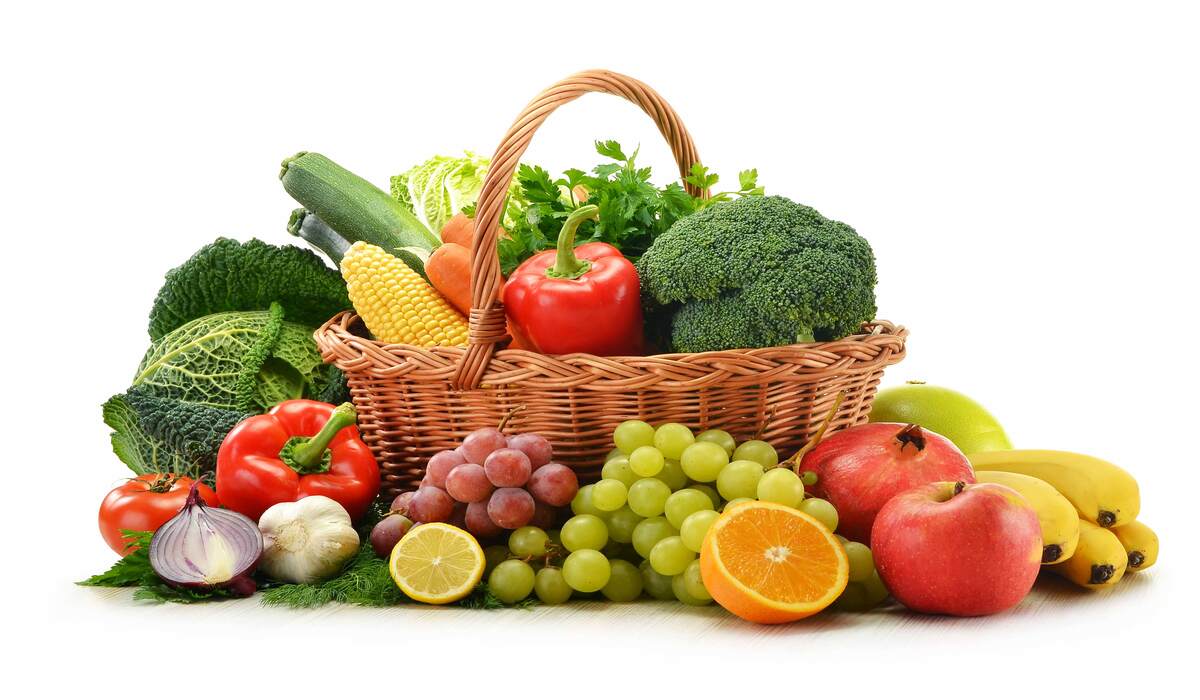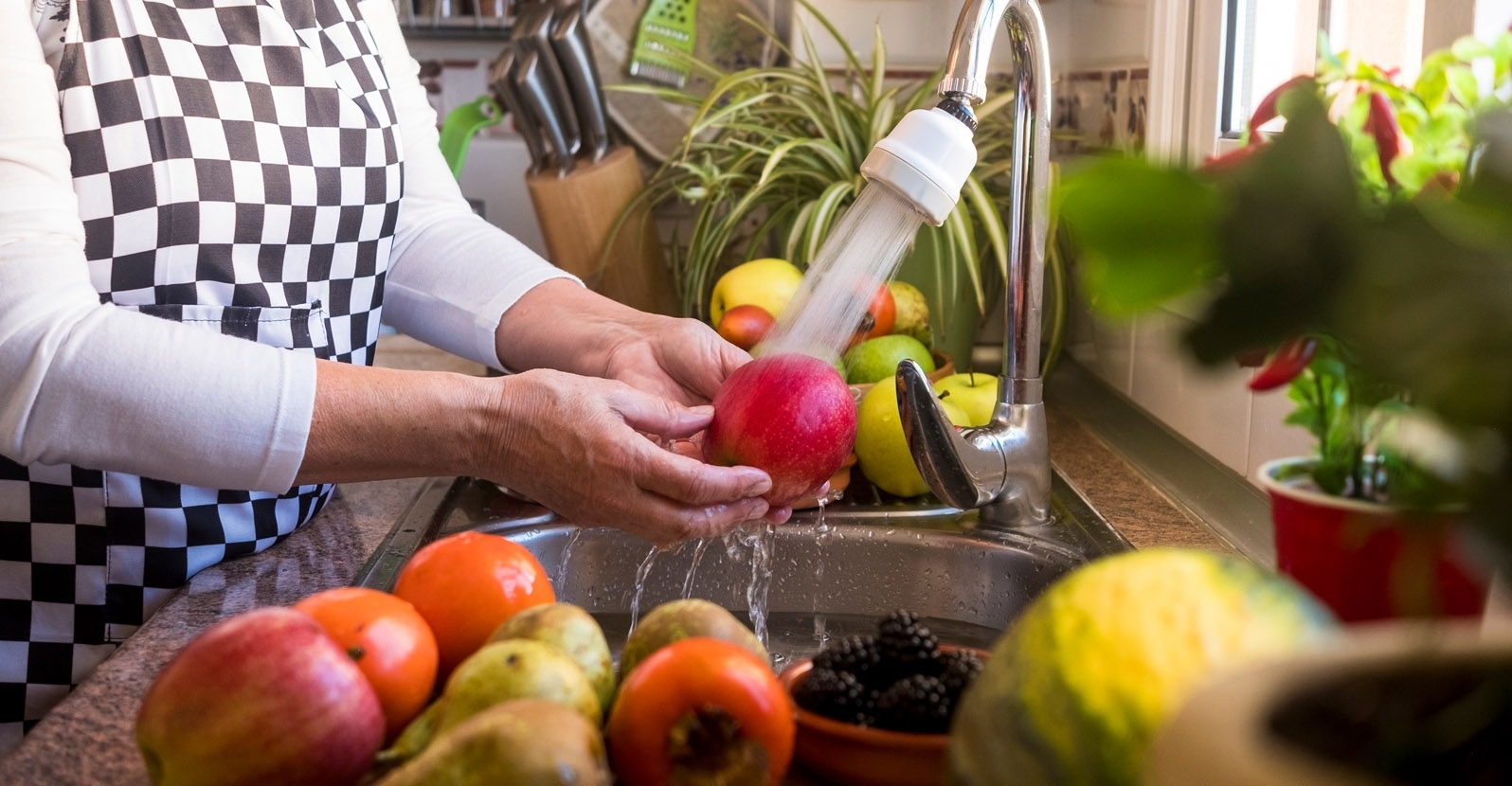Home>Types of Gardening>Edible Gardening>What Are Fruits And Vegetables


Edible Gardening
What Are Fruits And Vegetables
Modified: January 22, 2024
Discover the benefits of edible gardening and learn about fruits and vegetables. Enhance your health and enjoy nutritious produce from your own backyard.
(Many of the links in this article redirect to a specific reviewed product. Your purchase of these products through affiliate links helps to generate commission for Chicagolandgardening.com, at no extra cost. Learn more)
Table of Contents
Introduction
Welcome to the world of edible gardening! If you’ve ever dreamed of harvesting your own fresh produce or adding a touch of green to your living space, then you’re in the right place. Edible gardening, also known as kitchen gardening or vegetable gardening, is the practice of growing fruits, vegetables, and herbs that you can savor and enjoy at home.
Whether you have a spacious backyard, a balcony, or even just a sunny windowsill, edible gardening offers a rewarding and sustainable way to connect with nature and nurture your own food sources. Not only does it provide a sense of accomplishment, but it also allows you to have control over what you eat, choosing organic and pesticide-free options.
In this comprehensive guide, we will explore the fascinating world of edible gardening, focusing on fruits and vegetables. We will delve into their definitions, examples, and the key differences between them. Additionally, we will highlight the many benefits of incorporating fruits and vegetables into your diet.
So, whether you’re a gardening enthusiast looking to expand your knowledge or a beginner eager to get your hands dirty, this article will provide you with valuable insights and practical tips for your edible gardening journey. Let’s dig in and discover the wonders of growing your own fruits and vegetables!
Definition of Fruits
When we think of fruits, we often envision juicy apples, succulent strawberries, or refreshing watermelons. But what exactly defines a fruit? In botanical terms, fruits are the mature ovaries of flowering plants, containing seeds that are developed after fertilization.
Unlike vegetables that we will explore later, fruits are typically sweet or tart in flavor and are enjoyed as a snack or dessert. They are nature’s way of enticing animals to consume them, dispersing their seeds through digestion and ensuring the survival of the plant species.
Fruits come in a remarkable array of shapes, sizes, and colors. They can be classified into different categories, such as berries, drupes, pomes, and citrus fruits. Berries, like raspberries and blueberries, are small, juicy fruits that develop from a single ovary. Drupes, such as peaches and plums, have a single seed surrounded by a fleshy outer layer. Pomes, like apples and pears, have a central core containing the seeds, surrounded by a firm, edible flesh. Citrus fruits, including oranges and lemons, have a tough outer rind and juicy segments inside.
It’s important to note that not all fruits are sweet. There are also savory fruits, commonly known as culinary fruits, which have a mild or savory flavor. Examples of culinary fruits include tomatoes, cucumbers, and avocados. While these fruits are often used in savory dishes, they still possess the defining characteristics of fruits in botany.
Overall, fruits are nature’s delightful gifts, providing us with a delectable range of flavors and textures. Whether you’re biting into a juicy apple or savoring the tangy sweetness of a pineapple, these botanical wonders are not only delicious but also packed with essential nutrients that contribute to a healthy diet.
Examples of Fruits
Fruits encompass a vast variety of delicious and nutritious options. From familiar favorites to exotic delights, here are some examples of fruits that you can savor and enjoy:
- Apples: Crisp and juicy, apples come in a range of varieties such as Granny Smith, Gala, and Fuji.
- Bananas: This energy-boosting fruit is packed with potassium and is perfect for adding to smoothies or enjoying as a simple snack.
- Oranges: Bursting with vitamin C, oranges provide a refreshing citrus flavor and are a great addition to both sweet and savory dishes.
- Strawberries: Sweet and vibrant, strawberries are a classic summer fruit that is perfect for desserts, salads, or simply enjoying on their own.
- Pineapple: This tropical fruit brings a tropical twist to any dish with its tangy and juicy flavor.
- Watermelon: A summertime favorite, watermelon is incredibly hydrating and deliciously sweet, making it the perfect refresher on hot days.
- Grapes: Whether eaten fresh or turned into wine, grapes offer a burst of juiciness and are a convenient snack option.
- Mangoes: Known as the “king of fruits,” mangoes are lusciously sweet and provide a taste of the tropics.
- Kiwi: This small, fuzzy fruit is packed with vitamin C and adds a unique tartness to salads and desserts.
- Blueberries: These small, antioxidant-rich fruits are not only delicious but also boast numerous health benefits.
These are just a few examples of the wide variety of fruits available to tantalize your taste buds. Whether you enjoy them fresh, incorporate them into recipes, or blend them into smoothies, fruits are a versatile and delightful addition to your edible garden and daily diet.
Definition of Vegetables
While fruits are often associated with their sweetness and vibrant flavors, vegetables offer a diverse range of tastes and textures. Vegetables are the edible parts of plants, including leaves, stems, roots, and flowers, that provide essential nutrients and contribute to a well-rounded diet.
Unlike fruits, which are the ripened ovaries of flowers, vegetables encompass a broader range of plant parts. Leafy greens like spinach and lettuce, for example, are the leaves of plants, while carrots and radishes are roots. Other familiar vegetables include broccoli, cauliflower, cucumbers, and bell peppers.
Vegetables are known for their versatility and can be enjoyed raw, cooked, or incorporated into various culinary creations. They add depth and flavor to dishes and offer a wide range of health benefits due to their rich nutrient profiles. Leafy greens are often praised for their high content of vitamins A, C, and K, as well as minerals like iron and calcium. Root vegetables, such as sweet potatoes and beets, offer a hearty dose of fiber and essential micronutrients.
Additionally, vegetables are classified into different categories based on their botanical characteristics. Leaf vegetables, like lettuce and kale, are prized for their tender leaves and are often used in salads or sautéed dishes. Cruciferous vegetables, including broccoli, cabbage, and cauliflower, are known for their distinctive flower buds and are packed with vitamins and antioxidants.
Furthermore, there are starchy vegetables like potatoes and corn, which are excellent sources of carbohydrates. These vegetables provide energy and can be prepared in various ways, from baked potatoes to comforting corn chowder. Finally, we have the allium family, which includes onions, garlic, and shallots, known for their pungent flavors and culinary versatility in enhancing a wide range of savory dishes.
From the vibrant colors of leafy greens to the earthy flavors of root vegetables, the world of vegetables is diverse and exciting. Incorporating a variety of vegetables into your diet ensures a balanced and nutritious eating experience.
Examples of Vegetables
Vegetables offer a wide range of flavors, textures, and colors, making them an essential part of a balanced diet. Here are some examples of vegetables that you can incorporate into your meals:
- Leafy Greens: Spinach, kale, lettuce, and Swiss chard are just a few examples of nutrient-packed leafy greens that can be enjoyed in salads, sautéed, or added to smoothies.
- Cruciferous Vegetables: Broccoli, cauliflower, cabbage, and Brussels sprouts are part of this family, known for their unique flavors and high levels of vitamins and minerals.
- Root Vegetables: Carrots, radishes, beets, and sweet potatoes are among the many options available. They provide a hearty dose of nutrients and are often used in soups, stews, or roasted dishes.
- Allium Vegetables: Onions, garlic, shallots, and leeks belong to this group, offering bold and aromatic flavors that enhance a wide range of savory dishes.
- Solanaceae Vegetables: Bell peppers, tomatoes, eggplants, and potatoes are part of this botanical family. They add vibrant colors and distinct tastes to various recipes.
- Cucurbits: Cucumbers, zucchini, squash, and pumpkins fall under this category. They are versatile vegetables that can be enjoyed raw, pickled, grilled, or baked.
- Legumes: Beans, lentils, chickpeas, and peas are nutritious legumes that provide a good source of plant-based protein, fiber, and essential minerals.
These are just a few examples of the wide variety of vegetables available to enrich your meals. Experimenting with different vegetables can add diversity to your diet and allow you to explore new flavors and culinary possibilities. Whether you enjoy them as a side dish, incorporate them into stews or stir-fries, or create colorful salads, vegetables are a versatile and essential component of a healthy and balanced eating plan.
Key Differences Between Fruits and Vegetables
While fruits and vegetables are often grouped together in discussions about healthy eating, there are some key differences between the two. Understanding these differences can help us appreciate their unique qualities and incorporate them effectively into our diets. Here are the primary distinctions:
- Botanical Classification: From a botanical perspective, fruits are the mature ovaries of flowering plants, containing seeds. Vegetables, on the other hand, encompass a broader range of edible plant parts such as leaves, stems, roots, and flowers.
- Taste and Flavor: Fruits are typically sweet or tart in taste due to their natural sugar content. They are often enjoyed as a snack or used in desserts. Vegetables, on the other hand, have a wider range of flavors, including bitter, savory, and earthy notes. They are used in a variety of dishes, from salads to soups.
- Usage: Fruits are often consumed raw or used in sweet preparations like juices, smoothies, jams, and pies. They can also be incorporated into savory dishes to add a touch of natural sweetness. Vegetables, however, are utilized in a broader range of cooking methods. They can be eaten raw, steamed, sautéed, roasted, grilled, or used in soups, stir-fries, casseroles, and more.
- Nutrient Profile: Both fruits and vegetables provide essential vitamins, minerals, and dietary fiber. However, the specific nutrients may vary. Fruits are known for their high content of vitamin C, antioxidants, and natural sugars. Vegetables, particularly leafy greens, are rich sources of vitamins A, C, and K, as well as minerals like iron and calcium.
- Usage in Culinary Categories: Fruits are commonly associated with sweet culinary categories, such as desserts, snacks, and sweet beverages. Vegetables, on the other hand, are used in a broader range of culinary categories, including salads, main dishes, sides, and appetizers.
It’s important to note that there are some gray areas where the line between fruits and vegetables can blur. For example, tomatoes and avocados are botanically classified as fruits, but they are commonly referred to as vegetables due to their usage in savory dishes.
Understanding the differences between fruits and vegetables allows us to make informed choices when selecting and preparing our meals. By incorporating a variety of both fruits and vegetables, we can enjoy a diverse range of flavors, textures, and nutrients, making our diet both delicious and nutritious.
Benefits of Eating Fruits and Vegetables
Including a generous amount of fruits and vegetables in your diet offers numerous health benefits. These colorful and nutrient-dense foods provide essential vitamins, minerals, antioxidants, and fiber that are crucial for maintaining overall well-being. Here are some key benefits of incorporating fruits and vegetables into your daily eating habits:
- Nutrient-Rich: Fruits and vegetables are packed with vitamins, minerals, and phytochemicals that support optimal health. They provide essential nutrients like vitamin C, vitamin A, potassium, magnesium, and folate, which are important for proper functioning of the body and metabolism.
- Heart Health: A diet rich in fruits and vegetables is associated with a lower risk of cardiovascular diseases. The fiber, potassium, antioxidants, and other beneficial compounds in these foods help reduce blood pressure, improve cholesterol levels, and promote a healthy heart.
- Digestive Health: The high fiber content found in fruits and vegetables supports a healthy digestive system. It aids in regular bowel movements, prevents constipation, and promotes overall gut health.
- Weight Management: Fruits and vegetables are low in calories and high in fiber, making them ideal for weight management. They help to keep you full for longer, reduce cravings for unhealthy snacks, and provide essential nutrients without adding excessive calories to your diet.
- Reduced Chronic Disease Risk: Consuming a variety of fruits and vegetables has been linked to a lower risk of chronic diseases such as certain types of cancers, obesity, diabetes, and age-related macular degeneration. The antioxidants and phytochemicals found in these foods help reduce inflammation and protect against cell damage.
- Hydration: Many fruits and vegetables, such as watermelon, cucumbers, and strawberries, have high water content, aiding in hydration and maintaining optimal fluid balance in the body.
- Immune System Support: Fruits and vegetables are rich in immune-boosting antioxidants, vitamins, and minerals that help strengthen the immune system. Regular consumption can help defend against common illnesses and infections.
- Improved Skin Health: The vitamins and antioxidants found in fruits and vegetables contribute to healthy, glowing skin. They help protect against skin damage, reduce signs of aging, and promote a youthful complexion.
Incorporating a colorful array of fruits and vegetables into your daily meals not only enhances the taste and visual appeal of your dishes but also provides a wide range of health benefits. Aim to include different varieties and colors in your diet to ensure that you receive a wide spectrum of nutrients to support your overall well-being.
Conclusion
Edible gardening opens up a world of possibilities for individuals seeking a deeper connection with nature and a desire to take control of their own food sources. From the vibrant sweetness of fruits to the diverse flavors and textures of vegetables, these edible treasures offer a plethora of benefits for our health and well-being.
By understanding the definitions and distinctions between fruits and vegetables, we can appreciate the unique qualities that each brings to the table. Fruits entice us with their natural sweetness and offer a range of flavors to satisfy our sweet tooth, while vegetables provide a variety of tastes and textures that enhance savory dishes and contribute to a well-rounded diet.
The benefits of incorporating fruits and vegetables into our daily meals are numerous. From providing essential nutrients and supporting heart health to aiding in digestion and weight management, these plant-based foods are essential for maintaining optimal health and preventing chronic diseases.
So, whether you have a spacious backyard, a balcony, or a sunny windowsill, consider starting your own edible garden. Cultivate your favorite fruits and vegetables, or explore new varieties that spark your interest. Embrace the joys of growing your own food and relish in the pride of enjoying the fruits of your labor.
Remember to experiment with different recipes and cooking methods that highlight the flavors and textures of these nature’s gifts. The possibilities are endless, from refreshing fruit salads to hearty vegetable stir-fries, there is something to suit every palate and culinary preference.
Incorporating fruits and vegetables into our diets not only nourishes our bodies but also fosters a sense of sustainability and self-sufficiency. As we tend to our edible gardens, we cultivate a deeper appreciation for the wonders of nature and our connection to the food we consume.
So, embrace the beauty of edible gardening and savor the bountiful harvest that nature provides. Let your kitchen be your garden, filled with the vibrant colors and flavors of fruits and vegetables. Here’s to the joys of edible gardening and a healthier, more sustainable lifestyle!










